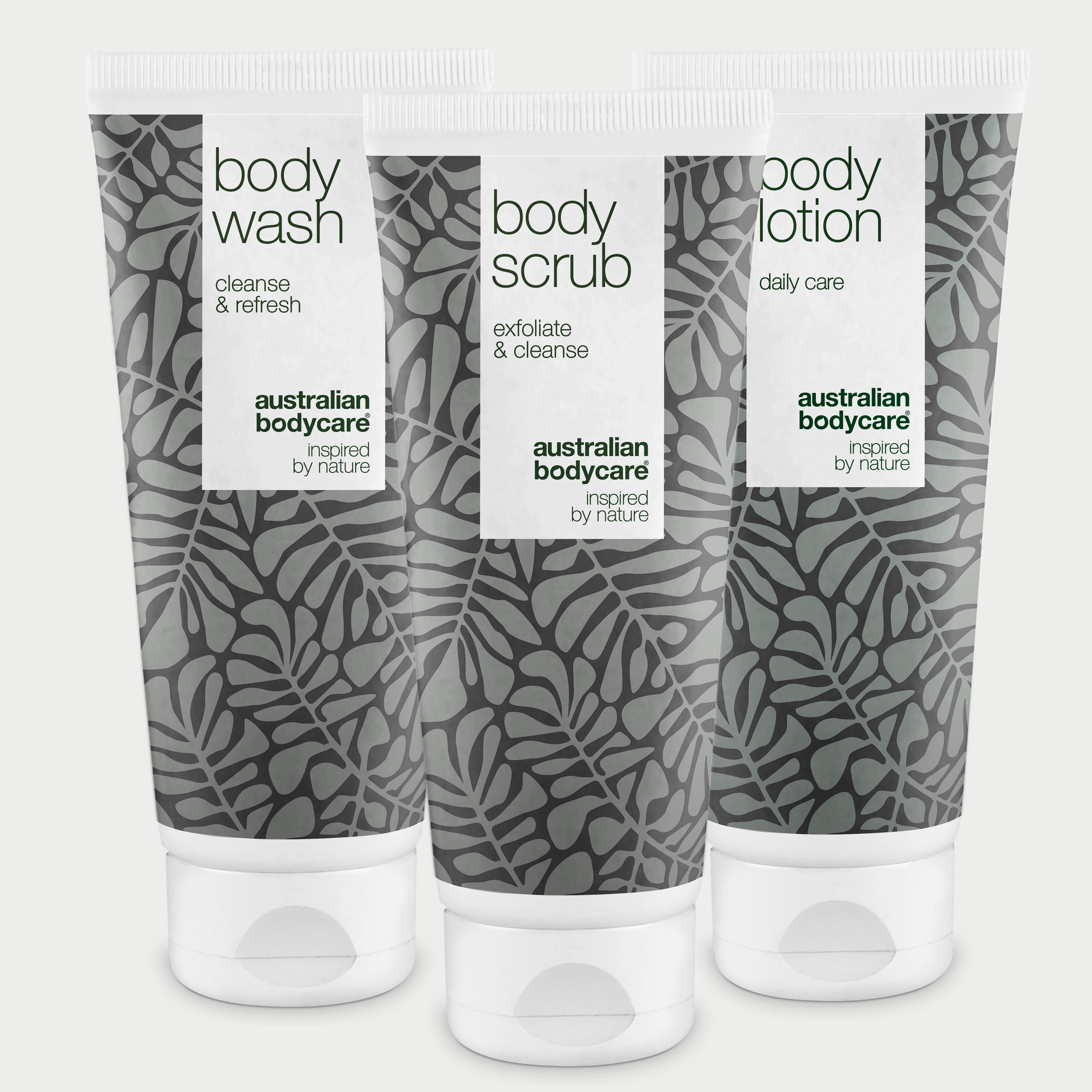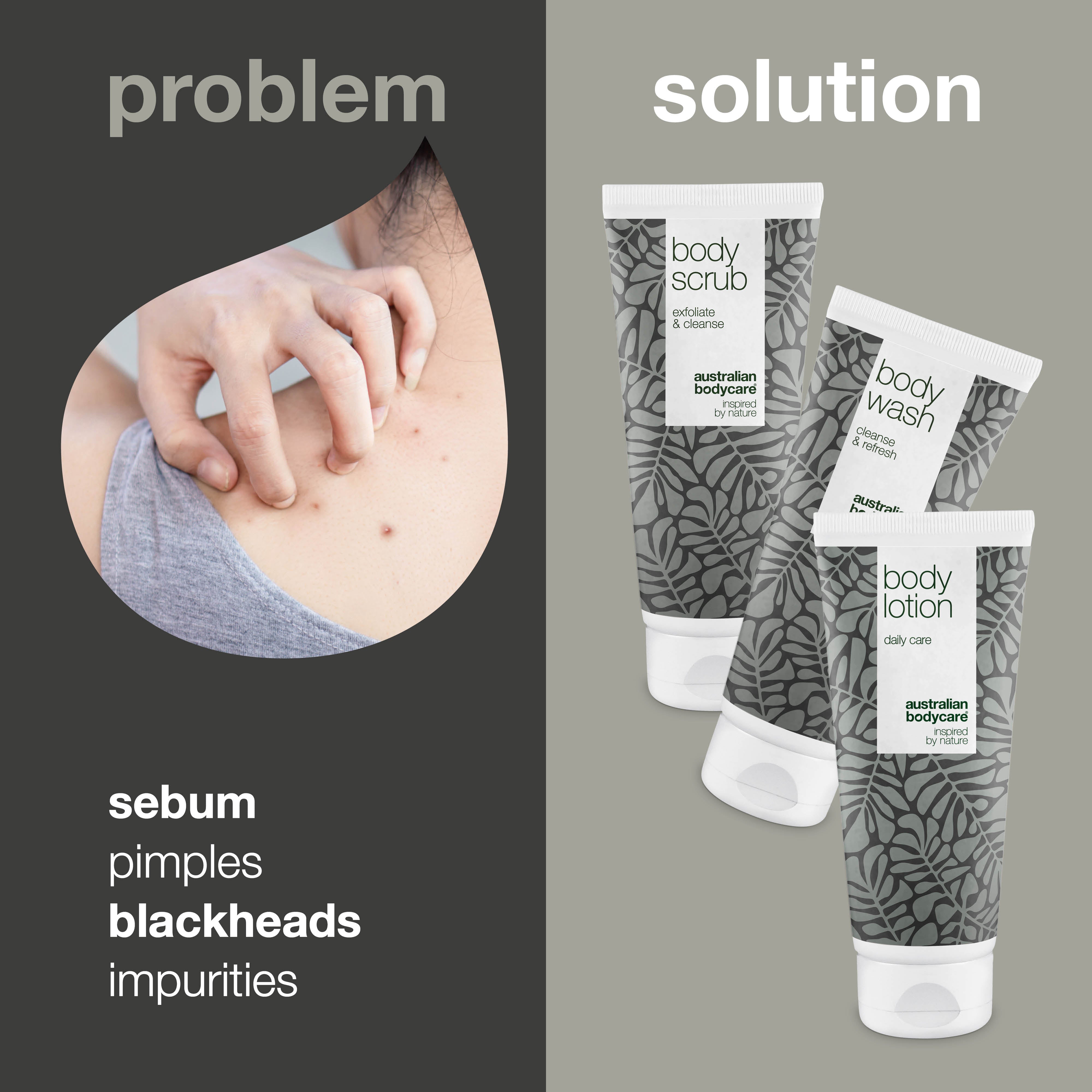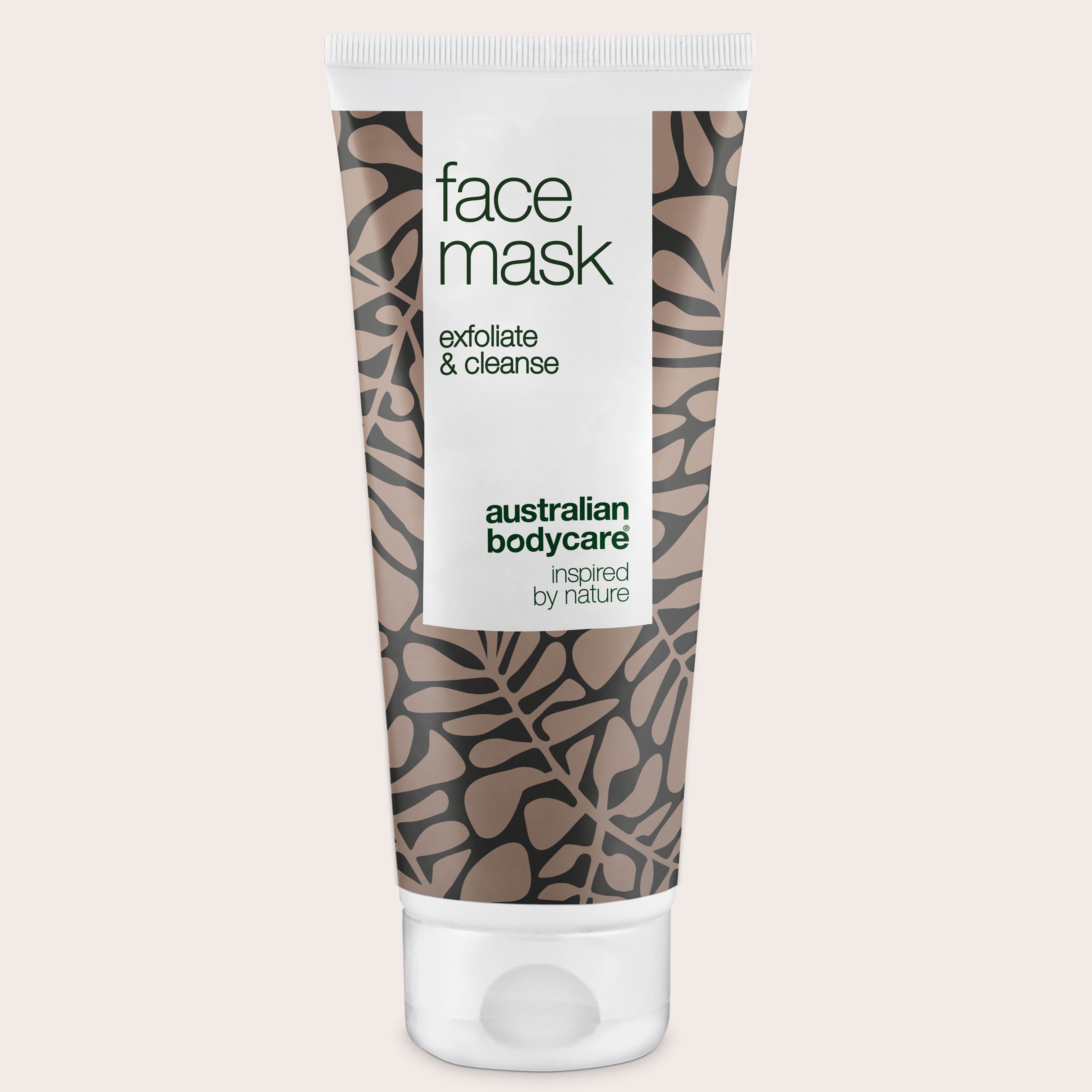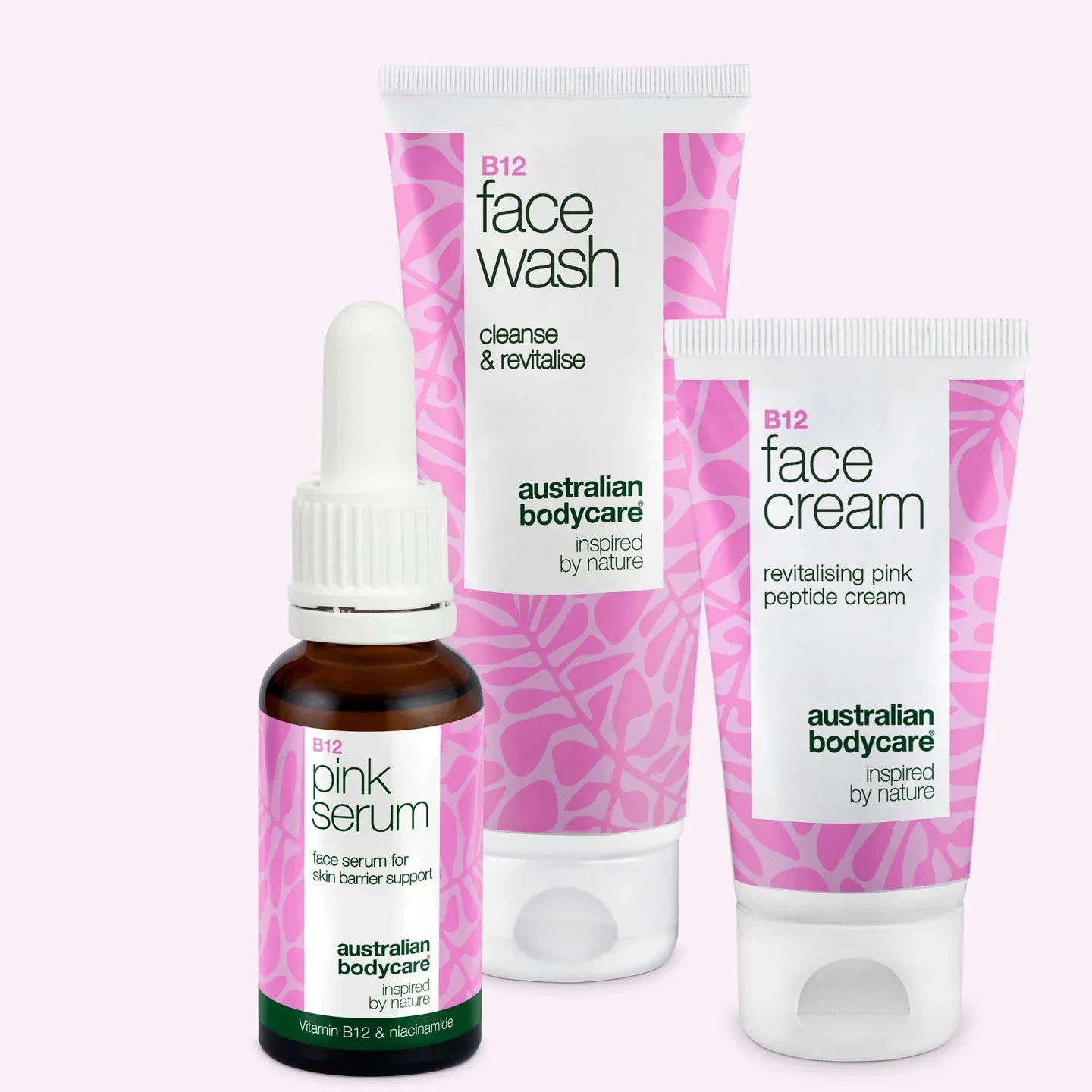Sebum plugs – What are they, and how do I get rid of them?
You may have looked down at yourself and discovered that you have small white spots here and there on your body.
They are not pimples, and they are not black either, so they cannot be blackheads. So what are they?
Table of contents
Sebum plugs – What you need to know
The small white spots are very often sebum plugs or keratin plugs, which we humans have almost all over our bodies.
So how do we get rid of them? How are they treated, and is there really any need to treat them at all? We will be looking in detail at these and similar questions in this guide to sebum plugs, where you can read all that is worth knowing about these irritating little growths.
Small children sometimes have red spots – these are not sebum plugs, and should not be treated in the same way as sebum plugs.
Why do people get sebum plugs?
They occur quite automatically, as the body produces them itself as part of its protection of your skin and hair. You must therefore be very careful not to confuse sebum plugs with blackheads, spotty skin or acne.
However, people often want to reduce the numbers of sebum plugs they have, for cosmetic reasons.
It is especially young people who feel uncomfortable if they have sebum plugs on their eyelids, legs, breasts or genitals.
And young people may suffer more from the problem, because hormone production increases dramatically during puberty. Since sebum plugs are an effect of hormone production, they will be seen more often and are much more widespread during puberty among young people.
Sebum plugs often appear in areas of skin where hairs grow. They appear naturally, of their own accord, and are not therefore caused by a particular lifestyle if you find them in various places on your body.
How do I get rid of sebum plugs?
See in the video how to use our body products against sebum plugs
You may have been considering for some time how to get rid of your sebum plugs. The answer is in fact quite simple. In general, there are two different things you have to do to get rid of sebum plugs.
NB: Always remember that you must not try to remove sebum plugs on your scalp or genitals, as they are important for the health of your skin in these areas.
Step 1 – Remove old skin cells:
- Give yourself an exfoliation once or twice a week to remove dead skin cells on the parts of your body where you want to remove sebum plugs.
- Exfoliation of the skin can be done in several different ways, and one is dry brushing with a scrub, which peels mechanically, or using a chemical peel.
- You can do a gentle exfoliation with a washcloth, with or without soap. It is important to use a clean cloth every time, so that you do not rub a lot of bacteria into your skin, which might cause impurities.
If you choose this method, we recommend that you use our Body Scrub to exfoliate your body. It is antibacterial and removes unnecessary skin grease.
Choose a deep-exfoliating body scrub
- If you choose to use a scrub, you should moisten the skin first under a warm shower. Then massage thoroughly, using circular movements, with your scrub or exfoliant. Start on your feet and work your way up to your shoulders. Then rinse with warm water and wash your body with body wash.
- A chemical peel is a very mild form of exfoliation. This method removes the dead skin cells by means of an acid. It is a very effective method, but is gentle, and can be used up to once or twice a day, unlike other mechanical methods, which are too hard on the skin to use every day.
An alternative method
- A completely different way to remove dead skin cells is dry brushing, which is an ancient beauty ritual that stimulates blood circulation. As the name suggests, dry brushing is done on dry skin, unlike the other methods described. Dry brushing is part of your care routine before a bath.
- Brush with long, straight strokes towards your heart – start on your feet and work inwards from the farthest parts of your body. Brush the whole of your body except for the delicate skin on your face, breasts and neck.
To finish off
- No matter which method you have used, it is important to finish the treatment with a good moisturising cream with a high content of moisturising ingredients, such as this Body Lotion, for example.
Always remember to keep an eye out for signs that your skin has been over-exfoliated: redness, red spots, irritation and dryness.
Step 2 – Apply cream
After you have completed the exfoliation, scrub or peel – whatever you like to call it – the next stage of your treatment for sebum plugs is to apply a cream to keep the skin moisturised.
- Skin must always be kept moisturised – if possible with a moisturising cream that is antibacterial, such as Australian Bodycare Body Lotion.
- After exfoliation you should always apply moisturising cream to your skin.
- Moisture attaches itself to damp, so you can use a lotion such as Australian Bodycare Body Lotion while your skin is still slightly damp after a bath – or after a session in the sauna.
It is quite simple to start treatment for sebum plugs, and you can do it yourself relatively cheaply. If sebum plugs need more intensive treatment, or if the sebum plugs are blocked, it may be necessary to see a doctor. Enlarged sebum plugs can be removed surgically.
You should not try to do this yourself, as it must be done correctly to avoid skin irritation or making the problem worse.
What are sebum plugs?
Sebum plugs are small white spots that can occur anywhere on the body. They are most visible on the parts of the body where there is most hair. However, we do not have sebum plugs on the palms of our hands or under our feet.
The small dots or spots may be easily confused with small pimples or hair follicles. Sebum plugs are in fact small sebum glands, which secrete oil that is so thick that it becomes sebum.
Sebum plugs occur in the hair or on the skin surface, because the skin cells are pressed into small pockets in these areas. The spots are quite harmless, and sebum is actually necessary for a number of body functions.
Sebum plays an important role in keeping skin clean and keeping water and fluids out. Because sebum is water repellent, it helps, for example, to lead tears away from the corners of the eyes. Sebum also helps to protect the skin and hair from drying out or cracking.
Last but not least, sebum has a positive effect in preventing the growth of certain microorganisms, including bacteria. This is one of the reasons why sebum plays an active role in keeping skin healthy.
Sebum plugs on the body
Sebum plugs occur naturally on any part of the body except the palms of the hands and soles of the feet, where there is no hair. The same applies to the genitals – here too, sebaceous glands are quite natural and necessary to keep the skin healthy, smooth and supple.
You should not worry, therefore, about spots on these areas, since everyone has them and they are a natural part of our bodily functions. If sebum plugs on the body are uncomfortable, you can try to reduce or remove them. You should never try to remove them from your scalp or genitals, where sebum plays an important part in keeping the skin healthy.
Sebum plugs occur on the body for quite natural reasons, since the sebum produced in the glands helps to protect the skin against bacteria and other microorganisms.
As a basic rule, then, sebum plugs on the body should simply be ignored, but if you have cosmetic problems, or they affect how you feel about yourself, you can consider exfoliating, using a scrub and applying plenty of body lotion to reduce the number of visible sebum plugs.
Sebum plugs on the back
Besides the face, chest and groin, the back is one of the areas where visible sebum plugs cause cosmetic problems. However, sebum plugs on the back are, like pimples on the back, quite normal, as this is one of the areas where there are most sebaceous glands. This makes it an area where you can easily find enlarged sebum plugs. Enlarged sebum plugs on the back may be extra uncomfortable for those affected, so it may be a good idea to see your doctor about the possibility of treatment.
However, sebum plugs on the back are neither harmful nor infectious, and you should consider whether it is really worth undergoing treatment.
Sebum plugs on the arms
Sebum plugs on the arms are also very natural, and as long as you only have sebum plugs, you can keep them under control with a mild scrub if you feel like it. It is important to moisturise the skin well, so that the body does not produce extra sebum to keep the skin moist. If the skin lacks moisture, you will find that your body automatically increases sebum production, and thus your problem with sebum plugs on your arms will become worse. Our Body Lotion with antiseptic Tea Tree Oil cares for the skin and keeps it free of bacteria.
If you feel you have problems with sebum plugs on your arms or other parts of the body, you can start a mild exfoliation treatment to remove layers of dead skin cells.
Keratin plugs on the legs
If you have spots on your legs, they may be sebum plugs or other small red spots called Keratosis Pilaris. This is not the same as sebum plugs, but occurs in a similar way, when the pores of the hair follicles on the legs are blocked by too much keratin in the skin.
If the spots on the legs are sebum plugs, they can be treated with a mild scrub or chemical peel to cleanse the pores in the skin on the legs. In this way the dead skin cells are removed, the skin can breathe, and your sebum plugs will disappear or be reduced.
Keratin plugs of this type on the legs are harmless, although many people, especially women, find them cosmetically unpleasant. They are especially irritating in the summer, when many people like to go about with bare legs, and then, of course, small spots are a nuisance.
Sebum plugs on the face
Sebum plugs on the face are not uncommon, as this is one of the areas where there are most sebaceous glands. Sebum plugs can occur especially on the eyelids, around the eyes, and in the T zone, which has the greatest tendency to become greasy.
To begin with, everyone has a number of large sebaceous glands right on the eyelids. These sebaceous glands or sebum plugs secrete oily sebum, which helps to lead fluid from the tear glands away from the edges of the eyelids. They are not only necessary and an active body function when we cry – tears are produced all the time to prevent the eyes drying out.
You must take great care if you treat sebum plugs on your face. The skin is highly sensitive, and bacterial growth can easily be cause in connection with treatment. In some cases sebum plugs may also appear on the side of the nose or on the cheekbones.
Sebum plugs under the eyes or near the eyes
Sebum plugs under the eyes or near the eyes are also typically seen in people who have more sebum plugs than normal.
They should be treated in the same way as sebum plugs on the eyelids – gently and carefully. Bear in mind, too, that there is a difference between sebum plugs and blackheads or pimples, which may also appear in the same places.
Sebum plugs may appear under the eyes, especially if you have pouches under the eyes. The combination may be irritating cosmetically, and they may affect your self-esteem, especially during puberty.
Sebum plugs on the cheeks
Just as many people have sebum plugs under the eyes, may also have problems with them on the cheeks. They appear for the same reasons as the others: blocked skin pores, so sebum accumulates just under the skin surface.
If you have sebum plugs on the cheeks that you want to get rid of, you can use a mild scrub.
Sebum plugs on the forehead
Sebum plugs on the forehead are not such a widespread problem as on the other parts of the body where more hair grows.
Often, there are no major problems caused by sebum plugs on the forehead, as hair growth is slight. Some people may still have large sebum plugs on the forehead, so that it seems necessary to treat them. You can do this in the same way as the others: use a suitable scrub, which is not too harsh, and be extra careful.
Sebum plugs on the scalp
Sebum plugs on the scalp are quite normal and natural, and this is one of the areas where they appear frequently. It is very important that you do not begin to remove sebum plugs from your scalp, as this is one of the places where they are most needed.
The scalp needs the sebum that is secreted to keep the hair healthy and supple. That is why you should not use scrubs or other methods to treat or remove sebum plugs from your scalp.
Spots on the scalp
Many types of spots can appear on the scalp. If they are sebum plugs, you should be extra careful about treating or removing them, as spots of this kind are essential to the health of your hair and skin.
If you have spots that itch on your scalp, they may have other causes, such as seborrheic dermatitis, head lice or a combination of these with sebum plugs. In that case, consider seeing your doctor for advice, and get help with any treatment that may be required.
Spots on the scalp are usually harmless and are not infectious, so you should also consider whether you really need to treat them at all.
If you find your spots on the scalp are sebum plugs, they help to keep the hair shafts healthy, and thus the whole of your hair. They protect the hair and skin against bacteria, too, so it is important not to try to remove them, simply because they are there.
Frequently asked questions about sebum plugs
How long do sebum plugs last?
How long do sebum plugs last? It is hard to give a definite answer to this question, as it varies from one individual to another.
In fact sebum plugs can appear throughout life, because they are caused by blocked sebaceous glands. Since there are sebaceous glands all over the body, sebum plugs can always arise.
If you are going through puberty now and are wondering how long you will have sebum plugs, it may be a consolation that the sebum plugs in large numbers occur precisely during those years. During puberty, both girls and boys have increased amounts of hormones in the blood, such as the male hormone, testosterone. Enzymes in the sebaceous glands convert this hormone to a more active hormone, which enlarges the sebaceous glands and increases production of sebum. The hormonal influence also causes changes in the pores from the sebaceous glands, so there is a greater risk that they can become blocked.
That is why there is a greater risk of sebum plugs, blackheads and skin problems during puberty.
What are hair follicles?
Hair follicles are tiny pockets in the lower layer of skin, also called the dermis. This is where hairs are formed by special cells in the skin.
The follicles contain the hair root, and the shape of the follicles plays a part in what the hair will look like. A follicle may have a spiral shape, and hair from this type of follicle will be curled.
The sebaceous glands are placed at the side of hair follicles in the dermis, and this is where sebum is produced. Sebum serves as a natural, healthy lubricant for hair, its individual strands, and the skin. If you are troubled by greasy hair, it is due to an overproduction of sebum.
If a hair follicle is blocked and unable to breathe, this may cause inflammation in the hair follicle. The inflammation may in turn cause the hair to grow inwards – which is also called ingrown hair.
What are sebaceous glands?
These are tiny glands that are found all over the body, except on the palms and soles of the feet. There are most sebaceous glands in the areas on the body which are most thickly covered in hair.
Sebaceous glands are associated with hair follicles, since they produce sebum, which helps to protect hair and keep it healthy and supple. We also have sebaceous glands in other parts of the body, which are not completely covered in hair, and thus in places such as the eyelids, penis, vulva and nipples.
Always remember that you should not remove sebum plugs from the sebaceous glands around the penis, on the vulva or on the scalp. If you are male and find small white spots that look like sebum plugs on your balls, they are in fact the hair follicles, and must not be removed.
The reason that they are extra visible precisely there is that there is not the same layer of fat and skin as on the rest of the body, so sebaceous glands and hair follicles are more prominent.
Blocked sebaceous glands – are they harmful?
A blocked sebaceous gland is not harmful, but can be uncomfortable, and may be in a place where it is undesirable for cosmetic reasons. A blocked sebaceous gland is a pocket in the lower layer of the skin (the dermis), where sebum and oily secretions have accumulated because the pore has closed. If the sebaceous gland is blocked, dead skin cells and sebum cannot slip out and will not be shed, so they accumulate.
A blocked sebaceous gland is also called a sebaceous cyst, or occasionally an atheroma. It will normally appear as a round lump deep down in the skin. There may be a small black dot at the centre, if it is infected.
Problems with blocked sebaceous glands arise most frequently on the face, scalp, throat and the upper part of the back. However, blocked sebaceous glands or sebaceous cysts can also appear relatively frequently on a man’s scrotum or in the groin. If a blocked sebaceous glad causes discomfort, it can be removed by a doctor. This is carried out as a minor procedure under local anaesthetic.
What is a sebaceous cyst?
A sebaceous cyst is the same as the type of blocked sebaceous gland described above. A sebaceous cyst is occasionally called an atheroma (but these have nothing to do with blood vessels or atherosclerosis). Sebaceous cysts form when the sebum, which normally serves as a lubricant for the hair on its way out of the follicle, is blocked and enclosed. The sebum then gradually accumulates, producing a hard lump under the surface layer of the skin. A sebaceous cyst is in principle quite harmless, and therefore should not be treated, unless you are troubled by it on a purely cosmetic level.
The problem with sebaceous cysts is that they can become infected if bacteria enter from outside. If this happens, the sebaceous cyst can become a boil. Make sure you see your doctor or a dermatologist if a sebaceous cyst becomes infected.
What is a fatty tumour?
A fatty tumour or lipoma and a sebaceous cyst are easily confused. One rule of thumb is that fatty tumours often become larger than sebaceous cysts. A fatty tumour will also be softer and located deeper in the skin.
A fatty tumour is also called a lipoma, and is a benign lump in the skin. Fatty tumours form in the dermis if the fat cells in the skin grow together to form a lump. A benign fatty tumour normally has no importance apart from its cosmetic effect, and therefore rarely requires treatment. It will neither be painful nor a nuisance in any other way, unless, for instance, it presses on a nerve.
A fatty tumour has a soft, rubbery feel, and can be pushed around freely under the skin. You do not have to think about treatment for a fatty tumour, unless you really find it a cosmetic problem. In that case, your doctor can help you have it removed.
It is not known why fatty tumours form, but some individuals are more disposed for them than others. Fatty tumours are hereditary, and as a point of departure cannot be prevented. Fatty tumours can develop anywhere on the body, as there are fat cells everywhere. Typically, however, they will appear on the upper body.
What is a blackhead extractor?
A blackhead extractor is used to remove blackheads and pimples from the body. It will typically be used to remove them from the face, since this is where most people are troubled by them for cosmetic reasons.
There are two primary types of blackhead extractor. The first is a little tool that is simply called a blackhead extractor, but may also be called a comedone extractor. This blackhead extractor is normally made as a two-in-one tool, with a different shape at each end to treat pimples or blackheads.
A blackhead extractor of this type is formed as a long, narrow, spear-like instrument, with a flat end and a rounded end. The flat end is used to remove blackheads by pressing directly on the blackhead, while the round end is used to squeeze pimples out.
The advantage of using a blackhead extractor instead of pressing with your fingers is that the skin is spared for irritation and more pain. Besides, it is a more effective method, as it is faster and easier to deal with blackheads that way than using fingers.
The other main category of blackhead remover is called a black mask or cleansing mask. A black mask is a liquid skin-care product supplied in a tube or jar. You apply it to your face, as the term ‘mask’ suggests.
This is a form of peeling treatment, where you allow the mask to work for the time stated on the packaging, and then remove it and rinse well. A black mask is used to remove dead skin cells and the toxic substances that have blocked the opening of the sebaceous gland. This treatment opens the pores in the skin again, so that the sebum can come out, and the blackhead will disappear too.











